Half the year spent in bone-aching cold. Soils frozen hard as concrete. Mountains of snow. A seemingly unending flow of machinery, workforce and earthen material to and from the site. A temporary city to house thousands of workers for nearly a decade. Wildfires encroaching dangerously close. Working under the ever-watchful eyes of regulators, stakeholders and environmentalists.
These are just a few of the extreme hurdles that multiple teams of contractors have had to overcome since the $11.8-billion USD Site C Clean Energy Project started in July 2015 in northeastern British Columbia for utility owner BC Hydro. Despite budget overruns and delays due to COVID-19 and geotechnical conditions, crews now are tantalizingly close to completing one of Canada’s largest infrastructure projects to date. Site C, located near Fort St. John, B.C., adds a third hydroelectric dam to the Peace River that will provide 1.1 GW of capacity once its six generating units are fully operational in 2025.
Related Links: Rugged Construction Series
Part 1: West Virginia Wild
Part 2: Pushing the Edge
Part 3: Cliffhanger

Map by Getty Images
*Click the image for greater detail
“Winter has been our main challenge here,” says Javier Garcia Ruiz, project director for Peace River Hydro Partners (PRHP), a joint venture of ACCIONA and Samsung C&T Canada Ltd., which is constructing the $1.3-billion main civil works portion at the 980-hectare site. “It’s not only a remote place, but also [there are] extreme weather conditions. During the eight years of the project, these have squeezed each 12-month duration to six months. So every year we have to ramp up and ramp down in a very fast way” for the brief summer season when work reaches its peak. But activity doesn’t stop there. A significant workforce remains active throughout the site 24/7, 365 days a year.
Initial design for Site C dates to the 1980s, when predecessors of current design partnership AtkinsRéalis (formerly SNC-Lavalin) and Klohn Crippen Berger performed the initial feasibility studies. That effort was shelved in 1990 due to cost and other factors, but revived in the mid 2000s in its current form.

The recently completed main earthfill dam is approximately 1,050 meters in length. At its peak in the summer of 2022, the project team placed 1 million cu meters of material per month.
Photo courtesy of Peace River Hydro Partners
Interlocking Puzzle Pieces
One of the first construction contracts, worth $348 million, was awarded in 2015 to ATCO to assemble an elaborate, modular 1,600-bedroom lodging complex for workers that also includes a gym, 100-seat movie theater, an enclosed running track and restaurant. There’s even a barber shop. Originally completed in 2016, the camp was later expanded to 2,200 units as the workforce increased. At the end of the project, the entire site will be dismantled and revegetated.

The 980-hectare dam site (left) also includes a generating station and spillway.
Schematic courtesy of Peace River Hudro Partners
*Click the image for greater detail
In addition to constructing the dam, PRHP built concrete foundations for the generating station, spillways and 800-m-long dam buttress to enhance seismic protection; and twin 750-m-long, 10.8-m-dia diversion tunnels. PRHP also constructed temporary cofferdams, roads, bridges and conveyance systems.
The contractor team reached a critical milestone in July when it wrapped up construction of the 60-m-high earthen dam stretching more than one kilometer across the river valley. The dam’s massive earthfill placement operation began in earnest in 2021, after building the cofferdams and prepping the bedrock foundation. Nearly 16 million cu m of material was placed, ranging from clay-rich till in the core to granular material of varying sizes for drainage and support and larger riprap to protect the upper slopes. The dam reaches 500 m in width at the base and tapers to just 10 m in width at the top.



With till deposits located close to town, the team opted for a 5-km-long till conveyor instead of running trucks. The conveyor has a capacity of 2,000 tons per hour.
Photos courtesy Peace River Hydro Partners
*Click the images for greater detail
A 5-km conveyor belt system delivered the huge quantities of till needed from a nearby quarry. This significantly reduced truck traffic, noise and emissions on both the jobsite and affecting nearby communities, says Garcia Ruiz. “It had the capacity of 2,000 tons per hour and we made that happen with great success,” he adds. During peak season in summer 2022, crews placed 1 million cu meters of fill per month, says the team.
Dam construction hit a snag early on during an unexpected rain event in 2018, when untreated drainage water that had become contaminated with heavy metals from exposed bedrock excavation entered the Peace River. In August, the joint venture agreed to pay a $1.1-million fine issued by federal agency Environment and Climate Change Canada stemming from the incident.
Between 2017 and 2021, crews labored to install 1.68 million cu m of roller-compacted concrete (RCC) for the spillway, powerhouse and buttress. While the material has distinct cost advantages, it can also be challenging in extreme climates due to a narrow temperature window, says Wendy Lannin, AtkinsRéalis project manager for engineering.
Despite the hurdle, PRHP “currently has the North American records in terms of yearly, monthly, weekly and daily RCC placement,” says Garcia Ruiz. The team placed 581,000 cu m during 2019—151,000 cu m in August of that year, 52,000 cu m in one week and 10,000 cu m in a single day. Controlling the entire supply chain from manufacturing aggregate to batching to transporting was key to achieve those levels of productivity, he adds.
Once PRHP completed each phased section of the concrete foundation, that section was turned over to AFDE Partnership, consisting of firms Aecon, Flatiron, Dragados and EBC, which landed the $1.2-billion contract to construct the generating station and powerhouse, penstocks—10-m-dia, 80-m-long tubular conduits that feed water into the turbines—and spillways.

Work continued on the site 24/7 and year-round. Temperatures reached as low as -40°F. To keep work sites habitable, temporary scaffolding wrapped in tarps was erected, then warmed by blowing in heated air.
Photo courtesy of AFDE Partnership
“At the beginning of the project, a lot of interphase meetings took place” to facilitate smooth handoffs, says David Tain, a project manager at Flatiron and construction manager for the team. “The contract includes multiple milestones for all the segments, which then starts milestone dates for other contractors.” For example, the powerhouse passes through a series of contractors, from foundations to structures to turbines. BC Hydro “has been doing an excellent job coordinating all the different contractors,” he adds.
AFDE’s portion grew by a significant amount last year via change orders and added scope transferred from the contract held by PRHP. That work includes the approach channel infrastructure that shunts water to the intakes and installing four orifices to the diversion tunnels to ready them for reservoir filling, says Tain.
“We successfully completed the conversion of one of the tunnels that currently diverts the Peace River around the dam site” last month, says Greg Alexis, manager of public affairs and community relations for BC Hydro. “Tunnel conversion work began in mid-June and involved installing four large rings to restrict the flow of water. The completion of tunnel conversion is required for reservoir filling to occur.”
A significant change order for AFDE’s scope added additional foundation support where water exits the power station and spillways—needed to mitigate geotechnical risk discovered after initial design. After the RCC buttresses were built and anchored into bedrock, embedded sensors revealed small unexpected movements that exceeded tolerances, according to BC Hydro. As a result, AFDE drilled through the RCC and installed 96 piles, each 2.5 m dia, to extend the foundation up to 25 m further into bedrock. In addition, a liner is being added to the approach channel to prevent water seepage into the foundation.

The spillway portion of the project (top right, foreground)required up to nine cranes on site at one time, including an 80-tonne capacity Potain MD 3200 MAXI dubbed “Sir Pix-a-Lot.”
Photo courtesy of Peace River Hydro Partners
The foundation modification was one factor that caused the project cost to jump $3.8 billion in 2021. Other factors include delays incurred during COVID-19 shutdowns, additional labor resources and amendments to several other contracts throughout the project, Alexis says.

Six penstocks (background) will feed water to turbines in the powerhouse below.
Photo courtesy of AFDE Partnership
A $348-million contract tasks Voith Hydro Canada with designing, supplying and installing the six vertical-axis turbines, generators and associated equipment. That work will continue into 2024.
F&M Installations built the $48.8-million substation at Site C, which wrapped in 2020. Last year, Alltek LP completed two 500-KV, 75-km-long transmission lines that connect Site C with the existing Peace Canyon generating station. The $83.6-million contract included installing more than 400 towers and using helicopters to string power lines.
Work to realign 30 km of upstream roadway and add five new bridges, including the 1-km Halfway River Bridge, finished in June. In all, the string of milestones takes the project to about 80% completion, Alexis says.
The next item on the to-do list involves one of the project’s most climactic events. “There is a possibility that reservoir filling could occur this fall, which is one year earlier than our approved schedule,” Alexis says. “There are still several key work areas that need to be completed first. Most notably, these include the approach channel, spillways, dam intake structures and tailrace area.”
Water flow will be restricted in the diversion tunnels to begin the four-month filling process. Once the reservoir reaches a depth of 52 m, the diversion tunnels will be permanently sealed.
In late July, the B.C. Environmental Assessment Office conditionally approved BC Hydro’s application for some temporary structures to remain in place within the Site C reservoir footprint. “We are pleased with their decision that allows for certain concrete, steel or aggregate structures to remain once the Site C reservoir is filled,” Alexis says. “We proposed leaving these structures in place, based on advice we have received from environmental experts who say leaving them in place is in the best interest of fish and their habitat.”
SITE C MAIN EARTHFILL DAM
Schematic courtesy of Peace River Hydro Partners
Completed at the end of July, the main earthfill dam consists of nearly 16 million cu m of material, and ranges from 500 m wide at the base to 10 m wide at the top. The core of the main earthfill dam is clay-rich glacial till, covered with layers of sand, coarse filters and granular material, along with a top layer of riprap. It is designed to withstand a one in 10,000 year earthquake, says owner BC Hydro. The dam took just over two years to complete.

Photo courtesy of Peace River Hydro Partners
All-Weather Workforce

In June 2023, the project employed approximately 6,000 workers at the site with approximately 65% native to British Columbia.
Photo courtesy of BC Hydro
With the site’s climate bordering on the subarctic, temperatures have plummeted during the long winter to as low as -40°F during the course of the project.
“I’ve worked up in the high Arctic, in the diamond mines, and I can tell you, there are stages of this particular area that are very comparable,” says Chris Boyer, earthworks construction manager for PRHP.
With operations needing to continue 24/7/365, work was essentially sequenced into two seasons. Between November and March, crews focused on excavation and temporary works. Between April and October the focus was on concrete placement. Workers would take more frequent micro-breaks during winter and warm up in warming shacks located throughout the site or in the lunch rooms, says Erica Hitzroth, PRHP human resources director.
Excavation during winter can be challenging but needs to be kept going, says Garcia Ruiz. “If you leave one area without touching it, it gets frozen within two or three meters—and it’s harder than concrete.”
The team would sometimes need to place concrete in winter, to recover lost time or accelerate the schedule. Since PRHP self-performed the concrete work, that meant maintaining the proper mix temperature through the lifecycle, starting with the stockpiles. “We installed steam paths underneath the aggregate stockpiles,” says Garcia Ruiz. The team would also need to heat the mix to ensure the right temperature as they were manufacturing. The finished product would then be moved into protected trucks and transported quickly to where it was needed. Temporary scaffolding wrapped in “onion skins” would be built around the injection site. The site would be kept warm by blowing heated air into the enclosure.

Several workers inspect the diversion tunnel in preparation for its eventual closure.
Photo courtesy of BC Hydro
Summers brought a different challenge. “The RCC had a very strict [temperature] framework, from 5°C (41°F) to 18°C (64.4°F). The summer for us is 28°C (82.4°F) or 30°C (86°F). So it was very critical; we couldn’t manufacture the concrete [without mitigation],” says Garcia Ruiz. The team used ice water to overcome the difference and get the right temperature. “We had an ice plant providing, depending on temperature and demand, from 30 to 55 kilos per cubic meter to the concrete,” he adds. Wide daily temperature fluctuations meant that the team occasionally had to cool the concrete down during the day, then warm it up again in the evening.


Voith Hydro is designing, supplying and currently installing six vertical-axis turbines, generators and their associated equipment.
Photos courtesy of BC Hydro
Stockpiling the aggregates in winter helped keep them cool, even into summer months. “We would open holes, and let the snow build inside. So we had this snow underneath the stockpiles. And in August, we would open the stockpiles and we could find ice,” relates Garcia Ruiz. Aggregates were also cooled in summer using wet belts during delivery to the batch plant.
Once temperatures drop to -25°C (-13°F), “we start having issues here, there and everywhere,” says Jaehyun Kim, PRHP deputy construction director. At that temperature, work needed to stop as machine oils in the equipment reached their pour points. Between January 2017 and August 2023, the temperature at Fort St. John dipped below that on more than 100 days, according to Canadian government data.


The dam will produce about 5,100 GWh of electricity each year, transported via a new substation (bottom left) and twin 75-km transmission lines.
Photos courtesy of BC Hydro
Early in the project, the PRHP team identified the need to keep a core team of about 200 on site. “When we were ramping up, it was quite challenging to find good people,” says Kim. But once those crews were identified, keeping them around during slower winters to ensure a quick ramp-up for the spring-summer work season was vital.
That case needed to be made to BC Hydro. “At the beginning, it was really hard to convince [executives], but after seeing the first two years of success of keeping crews through the winter, they started to believe there was benefit in the real world and not just on paper,” he explains.
Empowering Workers
Creating a multiskilled core group has been key for the project, says Garcia Ruiz. “That is the benefit of self-performing everything. “People working on the RCC at the beginning of the project are actually finishing the main earthfill dam,” he says. “At the beginning, you think that you need to bring the people with the right aptitude, but at the end, you find it is the ones with the proper attitude who lead you to success.”
Garcia Ruiz believes in empowering those workers. “We don’t like to micromanage,” he says. “We have implemented an ownership culture, not just for schedule and environmental reasons, but also for safety,” Garcia Ruiz says. That core group often becomes part of the joint health and safety committee, says Dave Spence, PRHP safety advisor-lead.

The temporary workers camp, provided and administered by ATCO, features a hair salon, a movie theater and a Starbucks among its on-site amenities.
Photo courtesy of BC Hydro
In all, PRHP has hired and trained more than 6,400 workers just for its portion of Site C. Getting the army of workers and other staff to the site most commonly occurs via air travel. More than 170,000 commercial and charter flights were booked for the job, says PRHP, with regional airlines serving Fort St. John increasing daily flights. The majority of workers are from the province, and about 7% are from First Nations, Hitzroth says.

Temporary workers camp.Photo by Scott Blair
Wildfires have posed a different sort of problem for the project. On May 15, the Stoddart Creek wildfire caused the Peace River Regional District and City of Fort St. John to issue evacuation alerts for the area, including Site C. “There were about 2,200 workers staying in the Site C camp at the time, along with another 1,000 workers that lived in the area,” says BC Hydro’s Alexis. Work at the site halted for around 24 hours.
“We were living our ERP [emergency response plan],” says Spence. Some employees who lived off site were forced to evacuate. Two charter planes full of workers had to be redirected to an alternate airport. “Our camp operator, ATCO, had secured enough buses and vehicles to safely transport all workers staying in camp to a safe location,” adds Alexis. Fortunately, the evacuation alert was rescinded a few days later.
Smoke from wildfires has been a more persistent threat than the fires themselves. “Wildfire smoke can go well above and beyond the worst air-quality conditions that you have ever come across from a pollution standpoint, and it can persist for days,” says Spence. The safety team mandates respirator use for any workers outside in adverse smoke conditions, but even those not in the field can be affected. “We had a wildfire smoke event on Sept. 19 and we had smoke inside our trailers. You could just see this hanging underneath the lights in the ceiling,” remembers Spence. “I felt like we could literally chew on the air that we had here,” he adds.
Collision prevention was a specific safety focus on site, says Joon Young Choi, PRHP deputy project director. “We operated 200 pieces of big equipment last season to move almost nine million cubic meters of earth,” he says. The project team felt they needed to add an extra layer of protection for workers, Choi says. The solution was to bring in a SCAN-LINK system. It “puts RFID tags inside of a hardhat and then receiver equipment on heavy equipment pieces,” explains Spence. If a worker walks within the alert radius of a machine, a loud alarm sounds in the machine cab. The project team reports over 20 million worker hours without a major incident.
There’s a distinct buzz in the air as various teams redouble their efforts to prep for the impending reservoir filling. Lannin of AtkinsRéalis, who has been working with other colleagues on Site C since 2007, says “we get really excited when we finally see everything we’ve worked so hard on for so long get to this phase.”
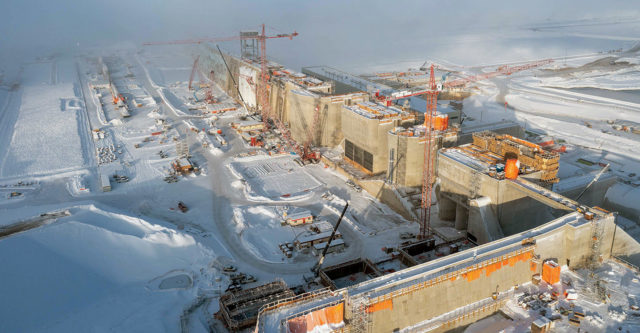






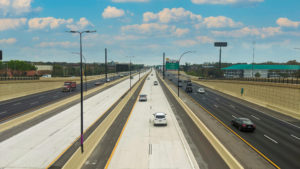
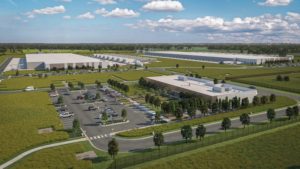
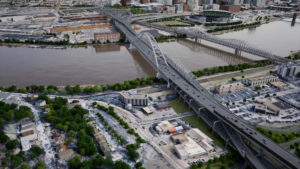
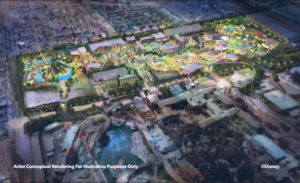
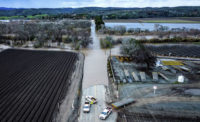
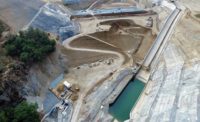
Post a comment to this article
Report Abusive Comment